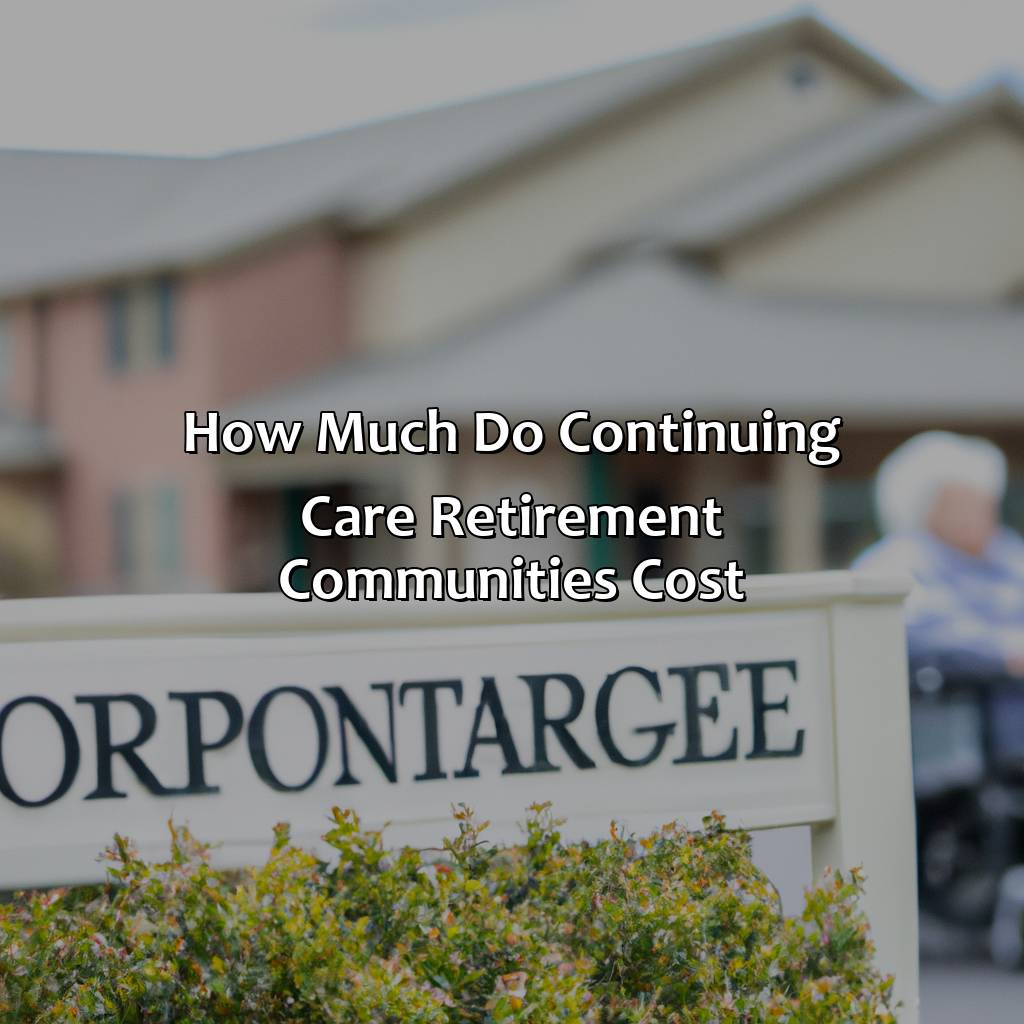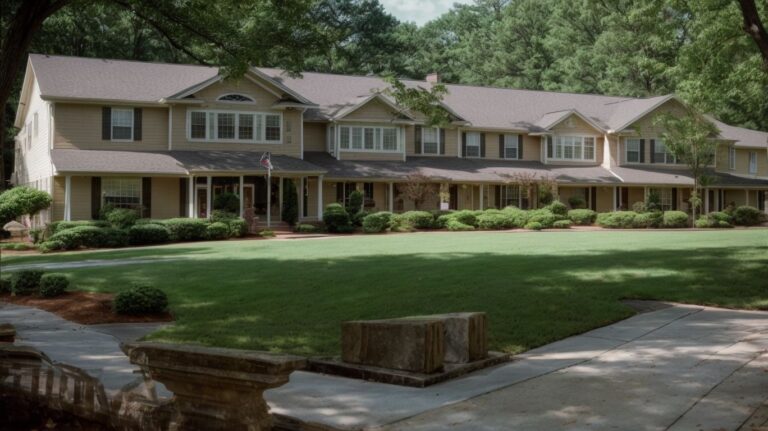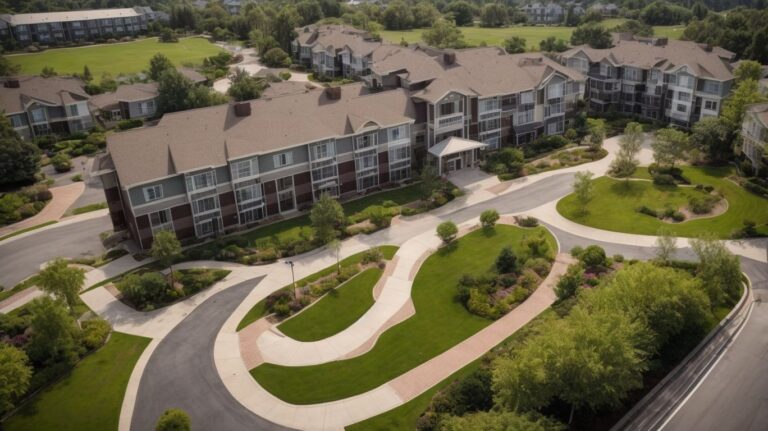How Much Do Continuing Care Retirement Communities Cost?
Key Takeaway:
- Continuing Care Retirement Communities (CCRCs) can be expensive with entrance fees and monthly fees, as well as additional costs for services.
- Financial options for CCRCs include Lifecare Contracts and Fee-for-Service Contracts, which can affect the overall cost.
- Factors that affect the cost of CCRCs include location, type and size of accommodation, and level of care needed.
Do you have a parent or grandparent who needs an assisted living home? You may have wondered how much Continuing Care Retirement Communities (CCRCs) cost. Read on to learn more about the costs associated with CCRCs and how to plan ahead.
Overview of Continuing Care Retirement Communities (CCRCs)
Continuing Care Retirement Communities (CCRCs) provide a supportive and secure living environment for seniors, where they can receive different levels of care as they age. These communities offer various amenities, healthcare services, and activities for their residents. The cost of CCRCs varies depending on the services offered, size of the accommodation, and location.
The initial cost to enter a CCRC is usually a one-time entrance fee, which ranges between $100,000 and $1 million. Additionally, there is a monthly fee ranging from $3,000 to $5,000. The fees cover accommodation, communal facilities, and healthcare services. CCRCs typically offer three levels of care: independent living, assisted living, and skilled nursing care.
One unique aspect of CCRCs is the guarantee of healthcare services for residents throughout their stay. If a person’s health deteriorates, they can seamlessly transition to a higher level of care without having to move out of the community. This feature gives peace of mind to seniors and their families, knowing that they can receive the necessary care as they age.
A former resident of a CCRC shared her story of how living in a supportive community improved her quality of life. She felt safe and comfortable in her living environment, which gave her the confidence to participate in various social activities. She benefitted from the healthcare services provided within the community and received timely medical attention when needed. She also enjoyed a sense of camaraderie with her fellow residents and felt a sense of belonging in the community.
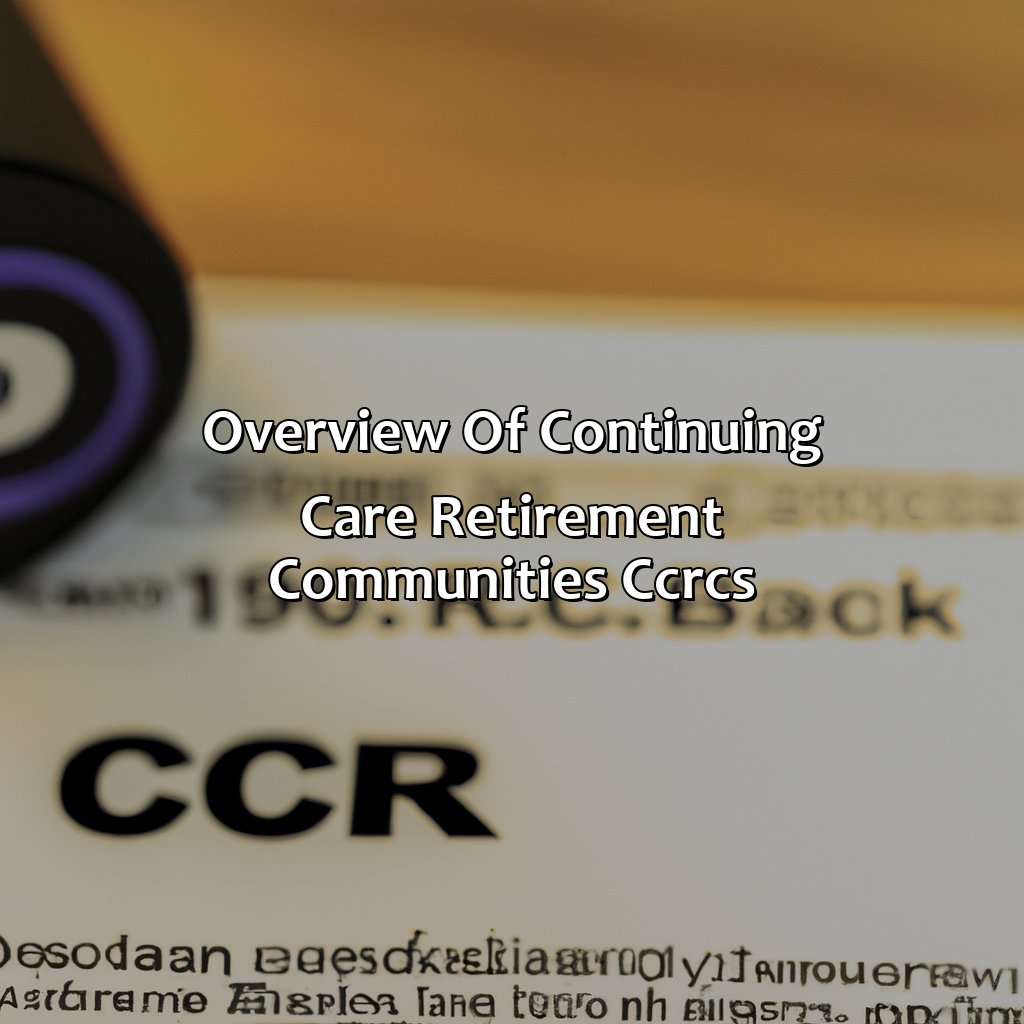
Image credits: retiregenz.com by Yuval Washington
The Cost of CCRCs
Comprehending the cost of CCRCs (Continuing Care Retirement Communities) requires taking into account entrance fees, monthly fees and additional service costs. This section looks at the expenses associated with CCRCs. These have been broken down into two subsections:
- Entrance/Monthly fees
- Additional service costs

Image credits: retiregenz.com by James Woodhock
Entrance Fees and Monthly Fees
A Continuing Care Retirement Community is a community designed for individuals who are looking for membership-based, long-term care facilities to live in after retirement. Membership fees can vary considerably depending on the type of CCRC you choose.
| Entrance Fees | Monthly Fees | |
| Independent Living | $30,000-$500,000+ | $1,500-$4,500+ |
| Assisted Living | $50,000-$250,000+ | $2,500-$6,000+ |
| Nursing Home | $100,000-$1 million+ | $5,000-$10,000+ |
CCRCs access significant entrance fees and monthly charges from retirees in exchange for housing and health services. According to a recent survey conducted by AARP, admission costs usually range from $30k up to $1 million or more. Senior members pay this fee as one-time initiation charges in exchange for a unit/apartment/villa within the CCRC premises that they can use as their permanent residence.
Pro Tip: Make sure to ask about a CCRC’s financial solvency before committing yourself financially as refunding an entry fee after leaving place may not always be guaranteed.
Unfortunately, aging is expensive, and it turns out that the cost of ‘additional services’ at a CCRC isn’t just your grandkids’ way of asking for extra allowance.
Additional Costs for Services
This section of the article discusses the extra expenses that residents of continuing care retirement communities (CCRCs) may encounter. There are various additional costs involved in CCRCs, such as move-in fees, monthly service fees, healthcare expenses, and meal plans. Let’s delve into these further.
- Move-in fees: CCRCs usually charge a one-time fee to cover the costs of preparing the living space for new residents. These charges vary according to different institutions and can be quite substantial.
- Monthly service fees: Residents have to pay monthly fees for services such as housekeeping, laundry and transportation. Different levels of services can be chosen at varying prices.
- Healthcare expenses: As residents’ health needs increase over time, they will incur higher healthcare costs. Some communities include health care in their contract fees while others charge an additional fee for healthcare.
It is important to note that additional costs vary between different CCRCs, so it is essential to research options thoroughly before making a decision.
Sources reveal that some CCRCs have announced lower initial entrance-fee payments amid current market impacts from COVID-19 pandemic.
Breaking news: Turns out, selling your soul to the devil isn’t the only way to afford CCRCs- financial options now available!
Financial Options for CCRCs
Financial navigation in continuing care retirement communities requires knowledge of various financial options. So, make a wise decision by quickly learning about lifecare contracts and fee-for-service contracts.

Image credits: retiregenz.com by Joel Arnold
Lifecare Contract
A Lifecare Contract Guarantees Support and Healthcare
Ensuring a lifetime of healthcare and support at a predictable cost is what a lifecare contract offers. Within the CCRC community, this type of agreement provides access to all levels of care without incurring extra costs as health needs evolve. Lifecare contracts can be further classified into three forms: extensive coverage, modified coverage, and fee-for-service.
In an Extensive Coverage arrangement, whatever healthcare services are needed at any level will be covered by the facility’s comprehensive policy. Modified Coverage Agreements generally offer lower Monthly Service Fees because they typically involve some coordination with outside sources to manage care services for the resident. In contrast, Fee-for-Service agreements require residents to pay out-of-pocket or use long-term care insurance to handle Health Maintenance needs.
Lifecare contracts significantly reduce seniors’ healthcare expenses in most instances, which makes them an excellent option if finances give pause to potential residents looking for summer homes. Although Lifecare contracts appear expensive upfront, customers must accept the long-term view – putting money upfront will lower overall living costs when factoring variable health conditions.
Though rare cases have occurred where some CCRCs close down early, because such insolvencies occur infrequently enough that customers who opt for Lifecare contracts rarely lose their investments. This is due to state insurance regulations requiring communities with larger numbers of Lifecare investment money set aside in The Escrow Account–a third-party account safety net–to guarantee residents’ daily operation continuity regardless of CCRC operational deficiencies.
Pay as you go, or pay up front? The fee-for-service contract for CCRCs: where the cost is determined by how much you use it, just like your ex’s credit card.
Fee-for-Service Contract
At CCRCs, a Pay-As-You-Go contract is also known as the Fee-for-Service Contract. This financial option can be suitable for individuals who are willing to take up the responsibility of covering all expenses personally.
Initially, this contract might seem cost-effective, but it may become more expensive in the long run. The resident will have to pay extra charges for additional services or healthcare required beyond their monthly fee.
It is worth noting that Pay-As-You-Go contracts do not guarantee medical care or residence in the community when there is no money available to pay for services. Furthermore, residents under such agreements might limit their access to amenities and activities enjoyed by others within the community.
While considering a Fee-for-Service Contract, residents need to understand its implications and determine if it is a wise choice based on their expected needs and wants.
Do not miss out on making an informed decision about fees and contracts at CCRCs. Act now and reach out to representatives at your desired CCRC location for professional guidance on making smart financial decisions in moving forward with your retirement plans.
If only we could pay for CCRC costs with sarcasm and witty one-liners – unfortunately, factors like location, amenities, and healthcare needs play a role in the price tag.
Factors Affecting CCRC Costs
To comprehend CCRC costs, investigate the location, type, size of accommodation, and level of care. These are vital subsets to consider when attempting to calculate the expenses of continuing care retirement communities.
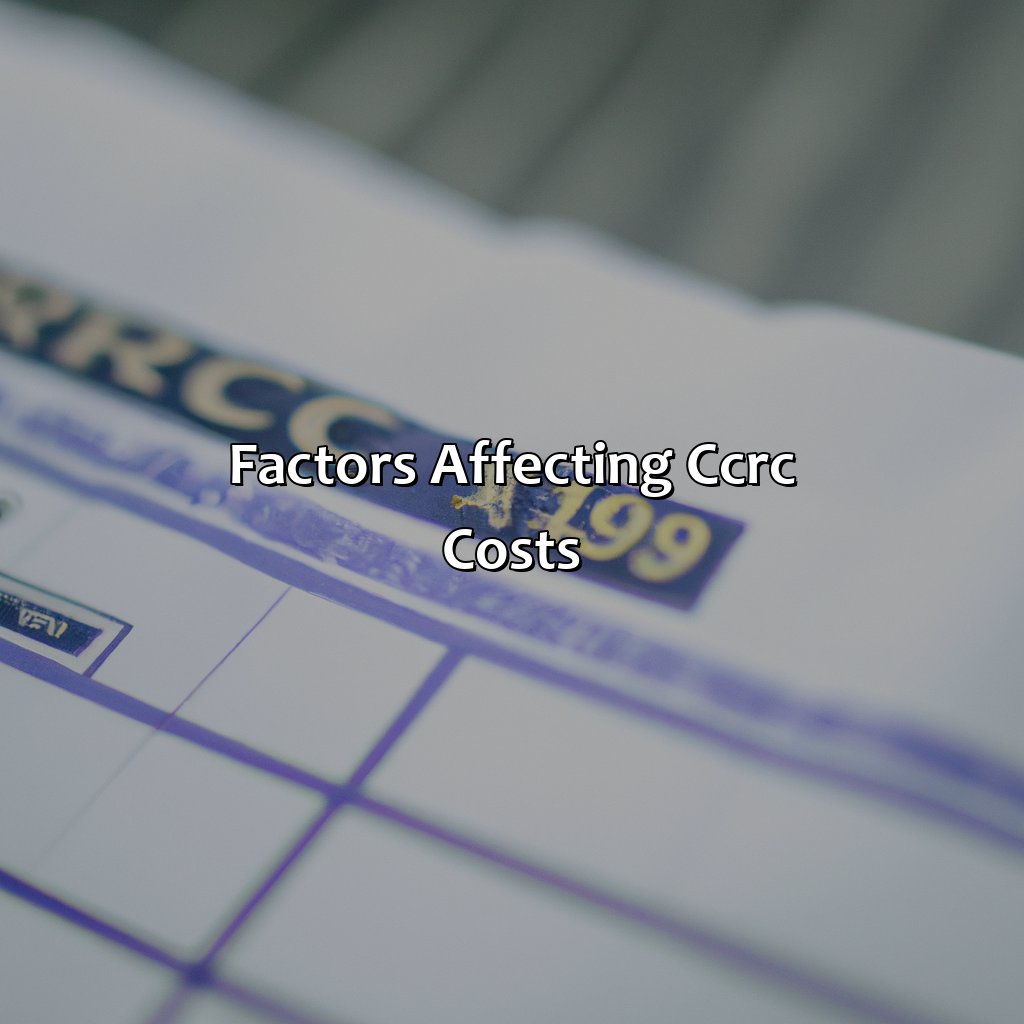
Image credits: retiregenz.com by David Woodhock
Location
The geographical location of CCRCs significantly impacts their costs. CCRCs in metropolitan areas have higher fees than those situated in suburban or rural areas due to the cost of living. For example, CCRCs in New York City are among the most expensive nationwide.
Furthermore, amenities and services offered at a specific location will also affect the cost of the community. Communities that provide extensive life enrichment programs, luxurious accommodations, and 24-hour quality medical care have expensive fees compared to those with fewer amenities.
It’s worth noting that even communities within the same area can vary in pricing based on unique offerings and services provided.
According to seniorliving.org, a continuing care retirement community’s monthly fee ranges from $2,000 to $10,000 per month, while entrance fees can range from $100,000 to over $1 million depending on location and facility services.
Living in a small room with a stranger may not be everyone’s cup of tea, but it’s definitely cheaper than a solo suite with room for all your imaginary friends.
Type and Size of Accommodation
Accommodation Options for CCRCs
CCRCs offer various types of accommodation, ranging from independent living apartments to skilled nursing facilities. The size and type of accommodation are significant factors in determining the cost of living in a particular CCRC.
Below is a table that outlines different types and sizes of accommodation provided by CCRCs, complete with their basic features and average costs per month:
| Type of Accommodation | Basic Features | Average Monthly Cost |
|---|---|---|
| Independent Living Apartment | Private apartment with kitchen and living area | $3,000 – $5,000 |
| Assisted Living Apartment | Private apartment with additional support services | $4,000 – $6,000 |
| Memory Care Unit | Secure unit specifically designed for residents with dementia or Alzheimer’s disease | $6,500 – $8,500 |
| Skilled Nursing Facility (Semi-Private) | Private or shared room with 24-hour nursing care | $7,500 – $9,500 |
While the table covers most common options offered by CCRCs, some may offer other unique alternatives like two-bedroom units or townhouses which may cost more or less than those mentioned above.
Pro Tip: Before selecting your preferred accommodation option at a CCRC, ensure to read through the contract thoroughly and check if any fees apart from monthly payments need to be considered. Fully understanding all costs involved will help avoid any surprises later on.
If you need any more care than a potted plant, you’re gonna have to shell out some serious cash at a CCRC.
Level of Care Needed
The required level of support determines the costs at Continuing Care Retirement Communities (CCRCs). The more assistance needed, the higher the expenses. This could mean residents’ needs for daily activities such as dressing, bathing, and medication management.
Facilitating resident mobility is an essential aspect of care. CCRCs with a memory care wing usually have sky-high charges since this level of support demands heightened attention. As seniors contemplate transferring to a facility, first-rate amenities such as whirlpools or fitness areas may sway their decision.
On top of standard nursing services, specialized medical attention has additional costs. Expertise in chronic illness management or nutrition consulting can add up quickly. It is crucial to inquire about specific fees per service before agreeing to expansive contracts.
Mary lost her husband in late 2019 and had been his primary caregiver for many years until his passing. She was now exhausted and struggled with caring for herself too. She moved into Hillcrest’s CCRC where she has access to world-class facilities that improve her quality of life that were affordable despite being on her retirement income.
Five Facts About Continuing Care Retirement Communities Costs:
- ✅ The average cost of a continuing care retirement community is around $3,500 to $5,000 per month. (Source: AARP)
- ✅ The costs of continuing care communities can vary widely depending on location, amenities, and levels of care needed. (Source: SeniorLiving.org)
- ✅ Many continuing care retirement communities require an entrance fee, which can range from $20,000 to over $500,000. (Source: US News & World Report)
- ✅ Medicare does not typically cover the costs of continuing care retirement communities, but some long-term care insurance policies may provide coverage. (Source: Nolo)
- ✅ Some continuing care retirement communities offer financial assistance programs for those who qualify, such as scholarships or reduced fees for low-income residents. (Source: Continuing Care Accreditation Commission)
FAQs about How Much Do Continuing Care Retirement Communities Cost?
How much do continuing care retirement communities cost?
Continuing care retirement communities (CCRCs) can vary greatly in cost depending on a variety of factors such as the location, size of the unit, level of care required, and amenities provided. On average, expect to pay between $3,000 to $5,000 per month.
What is included in the cost of a continuing care retirement community?
The cost typically includes housing, meals, housekeeping, transportation, activities, and some healthcare services. Depending on the level of care required, additional healthcare services may be offered at an extra cost.
Are there any discounts or financial assistance available for CCRCs?
Some CCRCs offer discounted rates for couples or veterans. Additionally, there may be financial assistance available through Medicaid or long-term care insurance policies. It is important to carefully research and inquire about any available options.
Can I customize my level of care and services?
CCRCs typically have a range of services and care levels available, and residents can choose which services they need and adjust their care plan as their needs change.
What happens if I run out of money while living in a CCRC?
Many CCRCs have a financial assistance program or a sliding scale fee to assist residents who are no longer able to pay the full cost of their care. It is important to inquire about these options before signing a contract.
What should I consider when comparing CCRCs?
When comparing CCRCs, consider the location, size and type of unit, services and amenities offered, healthcare options, and the financial stability and reputation of the community. It is also important to visit and tour each community before making a decision.
